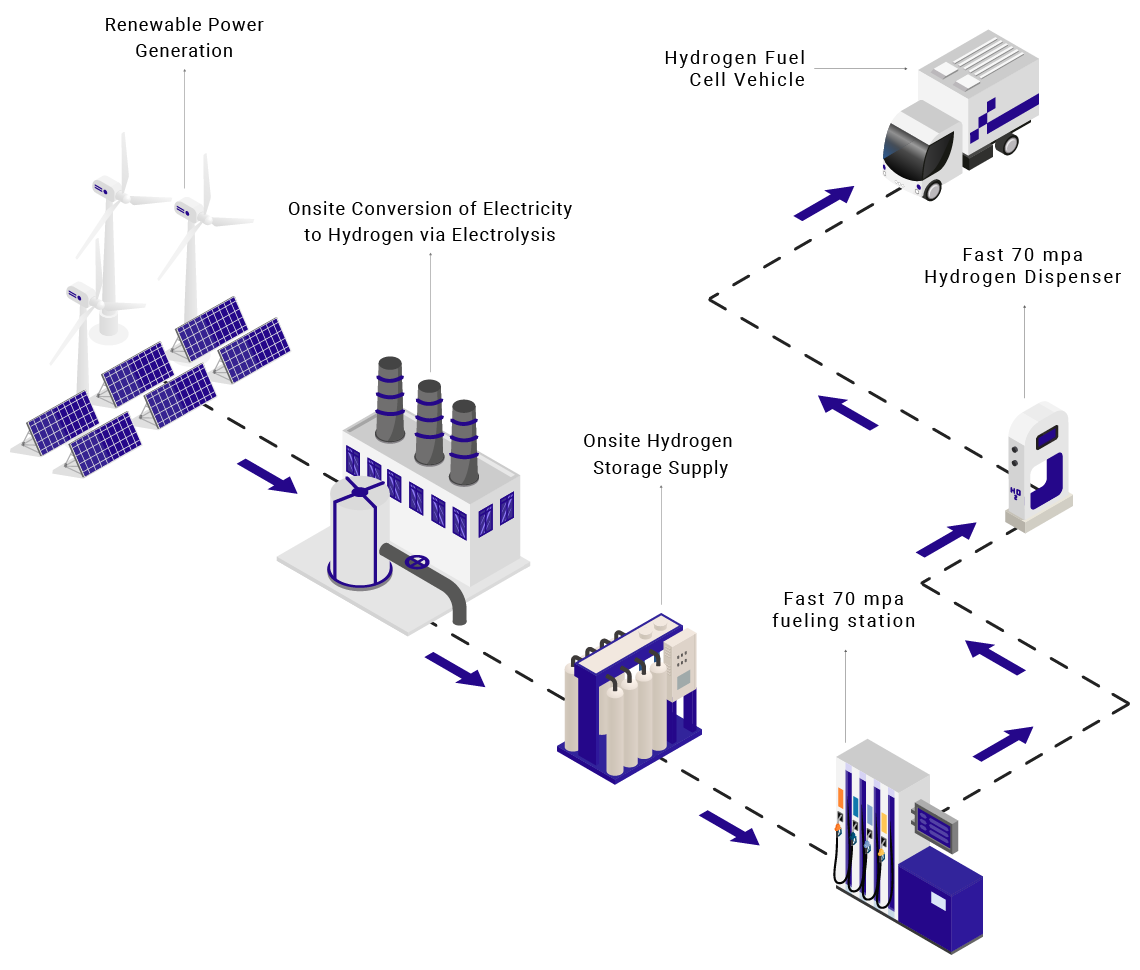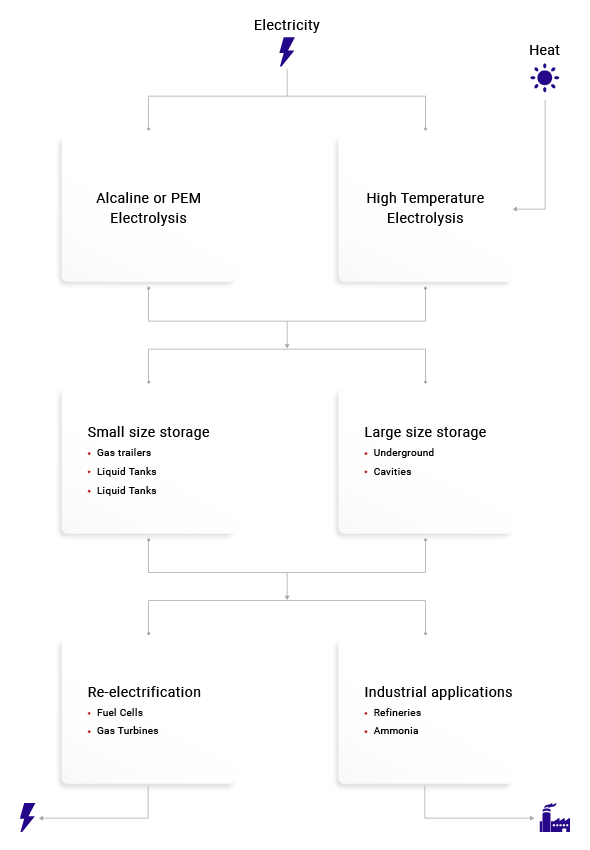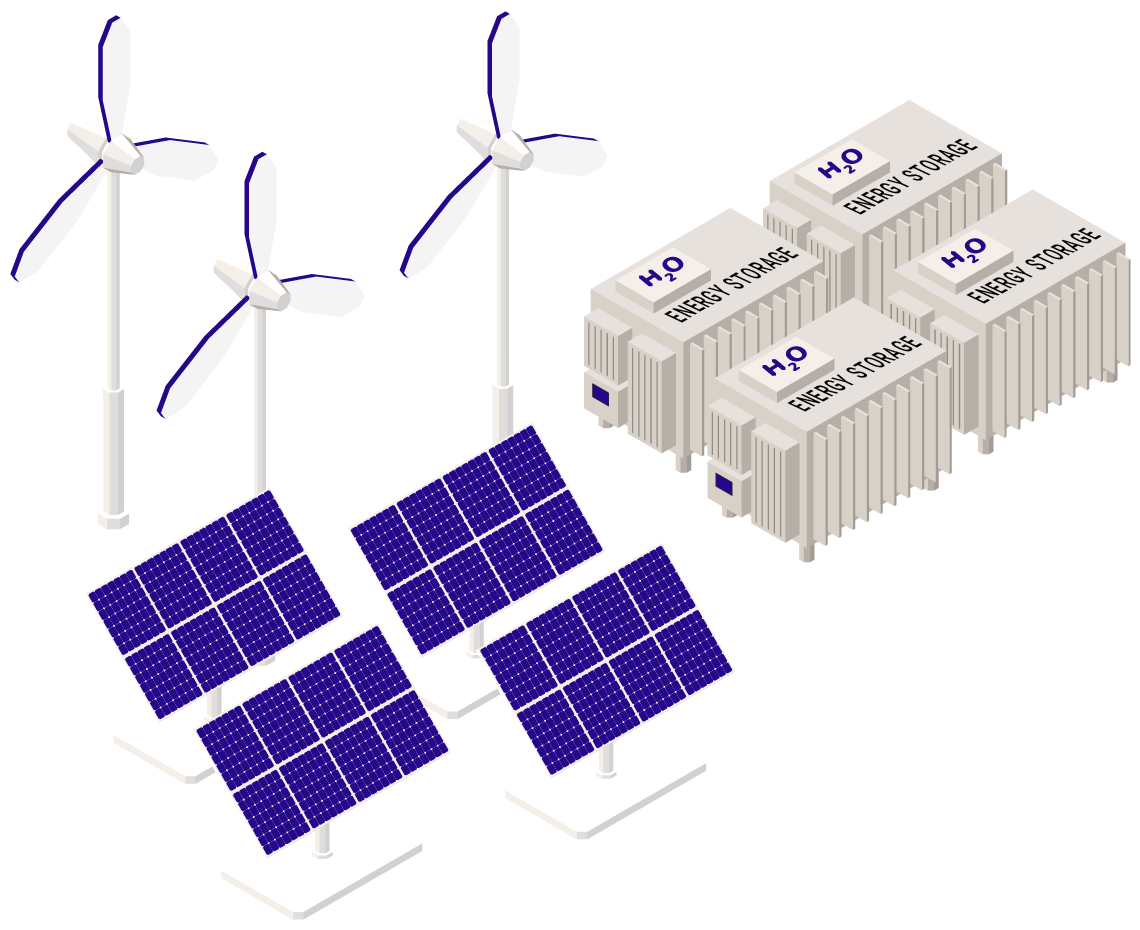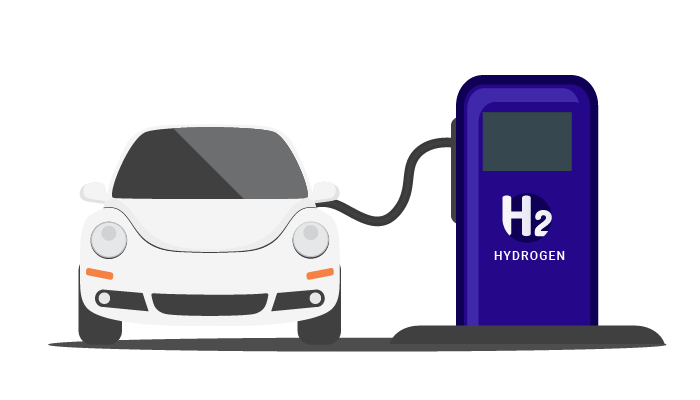The Solution
We can convert Electricity into hydrogen by the process of electrolysis. The hydrogen can be then stored in the Form of Energy Storage Solutions and eventually re-electrify for Mobility or back to the grid. Over the years the hindrance has been the lack of storage solutions & transportation difficulties which has curbed the influence of Hydrogen as a major player. Today we have started to reap the benefits with years of persistence in developing Hydrogen as a key resource with a diversified product portfolio.



